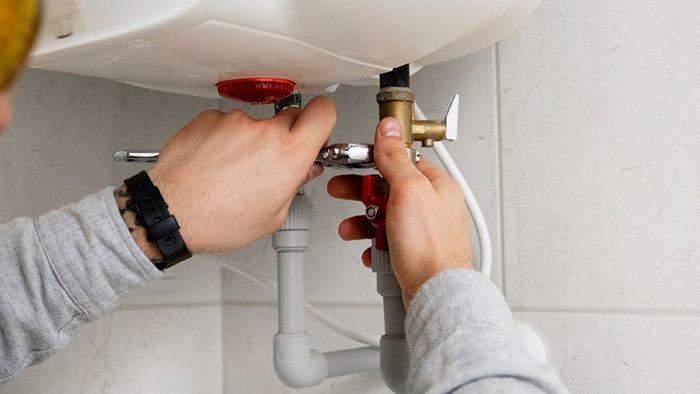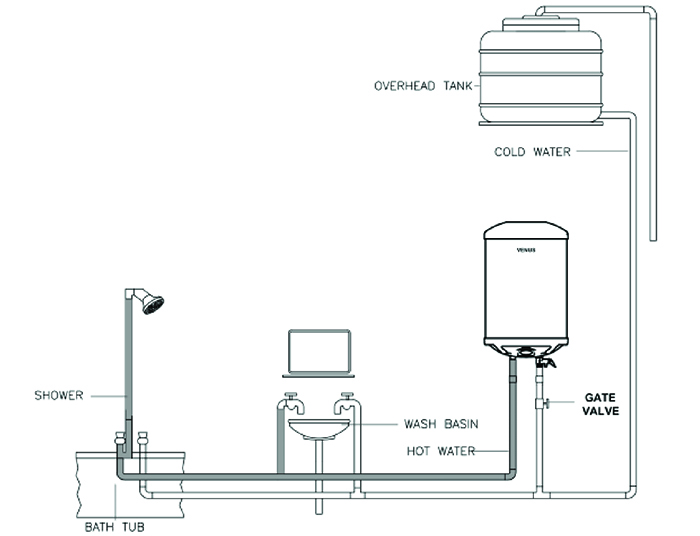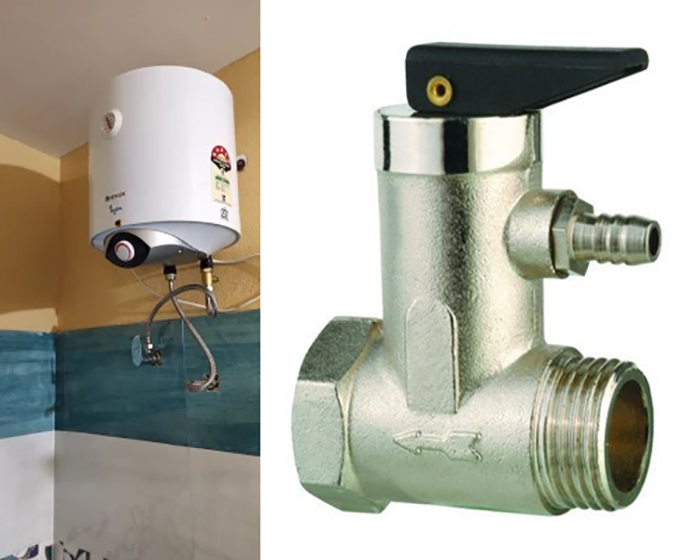
Water Heater | May 29 2023
Why does my water heater drip during heating

The Role of the Multi Function Valve (MFV)
If you are living in a high-rise building, you may likely be faced with water dripping from the Multi Function Valve ( MFV) of your water heater, during heating. This is due to thermal expansion and can cause damage to costly interiors and internal fittings if not addressed.
Why Dripping Happens During Heating (Thermal Expansion)
In high-rise buildings, water is often supplied by an overhead tank on the rooftop resulting in high water pressure at lower-level floors. To protect the taps and fittings from damage due to the high pressure, a pressure-reducing valve may have been fixed by the builder on the cold-water line to the water heater. The presence of the pressure reducing valve at the inlet to the water heater prevents thermal expansion during heating and results in water dripping from the MFV.During the heating phase, the water inside the storage tank will expand and try to go back through the inlet line due to thermal expansion. But the pressure reducing valve on the inlet line will not allow the water to expand. This causes the water pressure inside the tank to increase, and the MFV will start dripping to release the pressure when it exceeds its setting of 8 bars/kg/cm2 and protect the tank from damage. In the absence of a Pressure reducing valve on the inlet line, thermal expansion is allowed by the flow of water back through the cold water line.
Water Heater Dripping Due to Pressure Pump
The solution is simple – provide a PVC tube from the MFV to the nearest drain to drain the dripping water and prevent any internal fittings from getting damaged.

It's worth noting that most people believe their water heater is the culprit when the MFV is dripping, but this isn't the case. The MFV is actually functioning properly and doing its job! MFV is an essential safety feature of a water heater. It is designed to release excess pressure in the tank.
We have seen in many of our installations in high rise buildings where the customers are inconvenienced due to water dripping from the MFV and the interiors of the bathroom and fittings get damaged. The limited option available is to provide a small PVC tube from the MFV to drain to a nearby drain. It can affect the interior design adversely but will ensure the safety of the water heater and the user.
It's important to remember that the MFV is a safety device provided with every water heater. It should not be disconnected from the inlet line or tampered with in any manner to prevent its original functioning. This could be unsafe and may even void the warranty on your unit. Venus prioritizes the safety of their customers above all else. To ensure this, we use the latest technology and techniques to create products that are safe, efficient, and reliable.
Builders, architects and Plumbing Consultants should be aware of Thermal Expansion and its effect on water heaters in such cases. They should make adequate provision for allowing thermal expansion so that customers are not inconvenienced later on.
Venus Home Appliances, manufacturers of Venus water heaters, understand the importance of educating their customers on the benefits of using an MFV, and they strive to do so through various means. These include user manuals, customer service, and online resources. By doing this, they empower their customers to make informed decisions and ensure the safety and longevity of their water heaters.
Experiencing dripping issues with your water heater? Don’t worry—your MFV is doing its job! For expert guidance or service, call Venus Customer Care at 08144666999.

